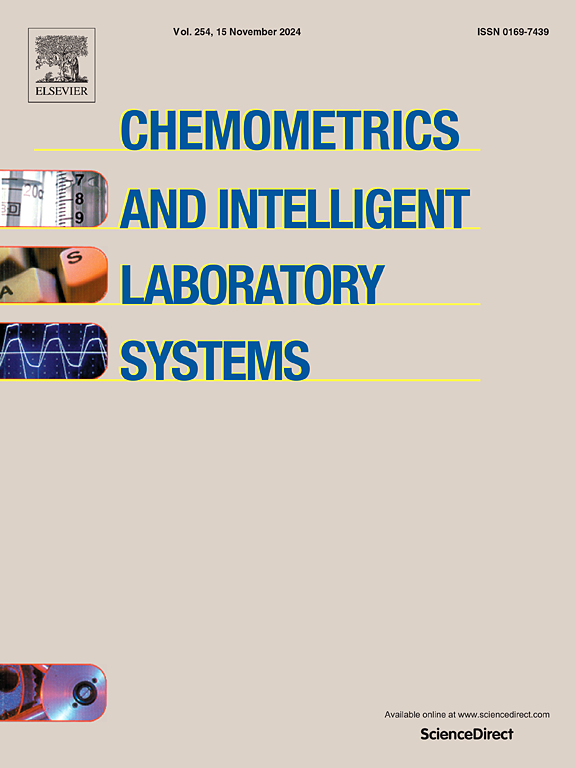Sharpness-aware minimization with physics-informed regularizations for predicting semiconductor material properties in molecular dynamics
IF 3.8
2区 化学
Q2 AUTOMATION & CONTROL SYSTEMS
Chemometrics and Intelligent Laboratory Systems
Pub Date : 2025-08-30
DOI:10.1016/j.chemolab.2025.105511
引用次数: 0
Abstract
In recent years, the growing adoption of artificial intelligence across diverse scientific fields has significantly increased demand for advanced semiconductor chips, necessitating innovations in semiconductor material design. Accurate prediction of semiconductor material properties is essential for improving chip performance, as these properties directly affect electrical, thermal, and mechanical characteristics. Traditionally, density functional theory has been the gold standard for atomic-scale simulations in material property prediction; however, its high computational cost limits scalability. Molecular dynamics simulations provide a scalable alternative by leveraging the power of machine learning force fields (MLFFs); however, semiconductor systems present unique challenges due to non-equilibrium dynamics, surface defects, and impurities. These factors often result in out-of-distribution (OOD) atomic configurations, which can significantly degrade model performance. To address this challenge, we propose Physics-Informed Sharpness-Aware Minimization (PI-SAM), a novel framework designed to enhance the prediction of semiconductor material properties across diverse datasets and challenging OOD scenarios. Specifically, PI-SAM leverages sharpness-aware minimization to achieve flatter loss minima, improving the model’s generalization. Additionally, it incorporates physics-informed regularizations to enforce energy-force consistency and account for potential energy surface curvature, ensuring alignment with the underlying physical principles governing semiconductor behavior. Experimental results demonstrate that our PI-SAM outperforms competing methods, especially on OOD datasets, underscoring its effectiveness in improving generalization.
分子动力学中预测半导体材料特性的具有物理信息的正则化的锐度感知最小化
近年来,人工智能在不同科学领域的日益普及,大大增加了对先进半导体芯片的需求,这就需要在半导体材料设计方面进行创新。半导体材料特性的准确预测对于提高芯片性能至关重要,因为这些特性直接影响电学、热学和机械特性。传统上,密度泛函理论一直是预测材料性质的原子尺度模拟的金标准;然而,它的高计算成本限制了可扩展性。分子动力学模拟通过利用机器学习力场(MLFFs)的力量提供了一种可扩展的替代方案;然而,由于非平衡动力学、表面缺陷和杂质,半导体系统面临着独特的挑战。这些因素通常会导致分布外(OOD)原子配置,这会显著降低模型性能。为了应对这一挑战,我们提出了物理知情的锐度感知最小化(PI-SAM),这是一个新的框架,旨在增强对不同数据集和具有挑战性的OOD场景中半导体材料特性的预测。具体来说,PI-SAM利用锐度感知最小化来实现更平坦的损失最小化,从而提高模型的泛化能力。此外,它还结合了物理信息的正则化,以加强能量-力的一致性,并考虑潜在的能量表面曲率,确保与控制半导体行为的潜在物理原理保持一致。实验结果表明,我们的PI-SAM优于竞争对手的方法,特别是在OOD数据集上,强调了它在提高泛化方面的有效性。
本文章由计算机程序翻译,如有差异,请以英文原文为准。
求助全文
约1分钟内获得全文
求助全文
来源期刊
CiteScore
7.50
自引率
7.70%
发文量
169
审稿时长
3.4 months
期刊介绍:
Chemometrics and Intelligent Laboratory Systems publishes original research papers, short communications, reviews, tutorials and Original Software Publications reporting on development of novel statistical, mathematical, or computer techniques in Chemistry and related disciplines.
Chemometrics is the chemical discipline that uses mathematical and statistical methods to design or select optimal procedures and experiments, and to provide maximum chemical information by analysing chemical data.
The journal deals with the following topics:
1) Development of new statistical, mathematical and chemometrical methods for Chemistry and related fields (Environmental Chemistry, Biochemistry, Toxicology, System Biology, -Omics, etc.)
2) Novel applications of chemometrics to all branches of Chemistry and related fields (typical domains of interest are: process data analysis, experimental design, data mining, signal processing, supervised modelling, decision making, robust statistics, mixture analysis, multivariate calibration etc.) Routine applications of established chemometrical techniques will not be considered.
3) Development of new software that provides novel tools or truly advances the use of chemometrical methods.
4) Well characterized data sets to test performance for the new methods and software.
The journal complies with International Committee of Medical Journal Editors'' Uniform requirements for manuscripts.

 求助内容:
求助内容: 应助结果提醒方式:
应助结果提醒方式:


